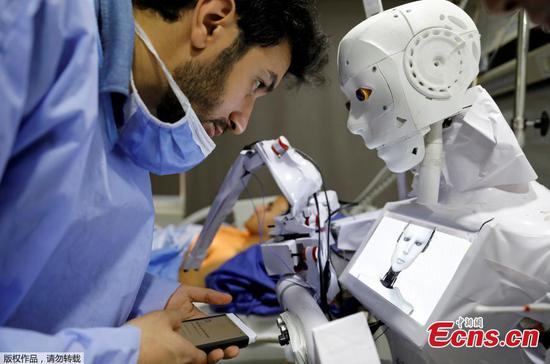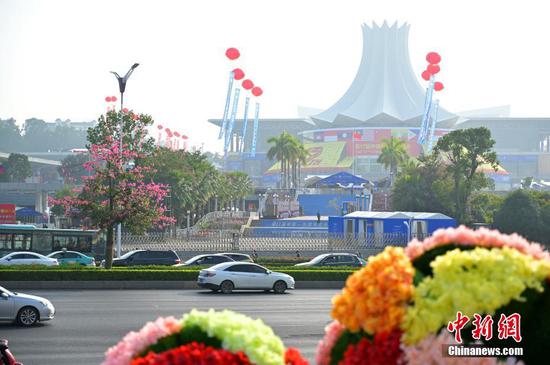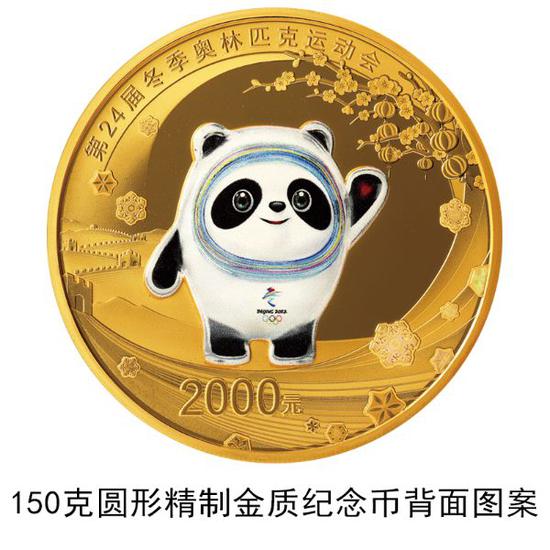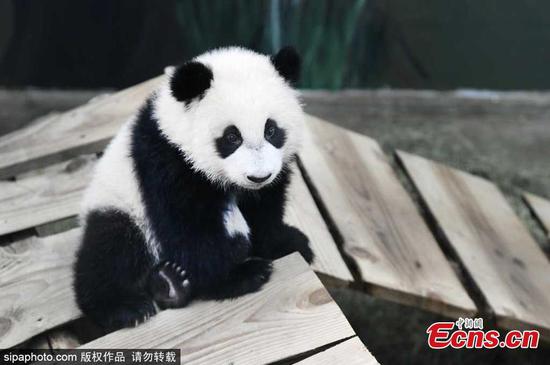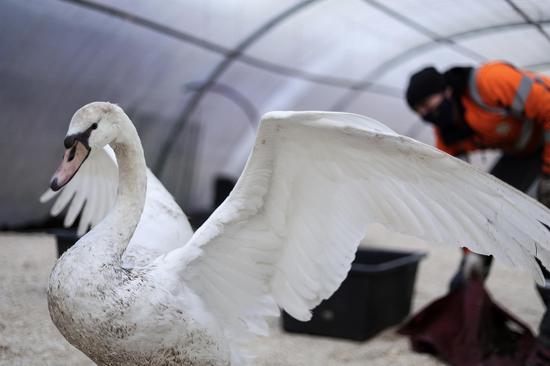
A U.S. cargo ship docks at the Qingdao Port, Shandong province. (Photo by Yu Shaoyue/For China Daily)
Thirty-seven animal and plant quarantine procedures related to trading in farm produce under the first-phase China-U.S. economic and trade agreement have been completed on time and with high quality, a customs official said on Monday.
China has implemented the Sino-U.S. phase-one trade deal in an orderly way and expanded bilateral cooperation in the area of agriculture, said Zhao Zenglian, director of the department of animal and plant quarantine at the General Administration of Customs.
As China's agricultural exports to the U.S. currently account for 10 percent of its total agricultural exports, the official said the country will promote exports of its agricultural products to the U.S. in the next stage.
The world's two largest economies signed their phase-one trade pact on Jan 15, after a year of negotiations. Based on the deal, China will purchase and import manufactured goods, agricultural goods and energy products from the U.S..
"Since the implementation of the trade deal, we have properly resolved the quarantine access issues of U.S. agricultural products such as potatoes, barley and pet food, lifted the avian flu epidemic ban on U.S. poultry products, and allowed them to be exported to China," said Zhao.
In the meantime, Chinese citrus fruit, jujubes and fragrant pears also gained the green light to be exported to the U.S..
"China and the U.S. are important trading partners to each other," he said, adding that they are highly complementary in the field of agriculture and are natural partners, and that expanding agricultural cooperation is mutually beneficial.
In addition to shipping more agricultural products to the U.S., China has also gained the right to export kiwi fruit and jujubes to Chile, pears to Brazil, and puffer fish and other aquarium fish to Japan in recent years.
Backed by 17,811 registered exporters in this sector, China to date has exported 295 kinds of agricultural products to 190 countries and regions, according to the GAC.
"With China recovering from the pandemic in an exceptional manner, we have seen the quick recovery of the Chinese economy and its consumption market," said Liu Jun, president of Cargill Inc China, a Minnesota-based agricultural conglomerate.
Immense growth potential exists in China for various agricultural products, he said. With its huge population, demand is rising and constantly evolving.
The U.S. company signed agreements to trade goods worth $2.7 billion, including beef and grain, during the third China International Import Expo held in Shanghai in November.
To meet its surging domestic demand, China imported 91.39 billion yuan ($13.88 billion) of U.S. agricultural products in the first three quarters of 2020, a growth of 44.4 percent year-on-year, according to the GAC.
As China has been working with other countries to make economic globalization more inclusive and balanced to mitigate the impact of the COVID-19 pandemic, its promotion of the "dual-circulation" development paradigm will prove timely, said Lyu Jun, chairman of COFCO Group, China's largest foodstuff producer and grain trader by sales revenue.
The new paradigm is centered on the domestic economy and aims at better integrating the domestic economy with the global economy. It will not only benefit the Chinese economy but also create more growth opportunities for countries around the world, he said.















